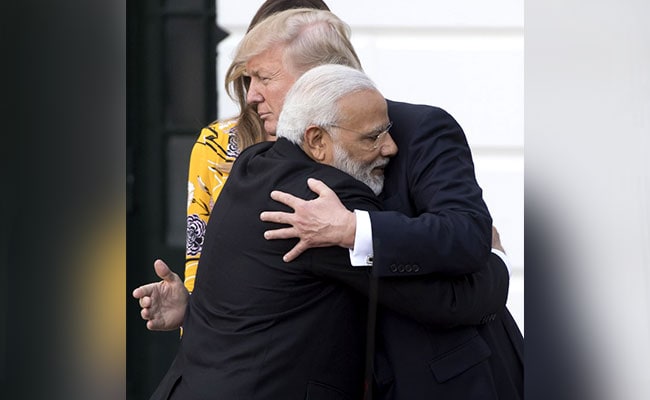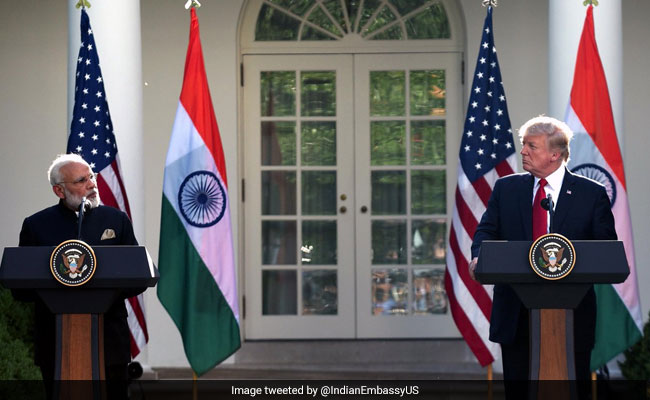Undoubtedly, America's decision to designate Syed Salahuddin - the leader of the Hizbul Mujahideen who has stoked terror in the Kashmir Valley from his base in Pakistan-Occupied Kashmir since 1989, is a big win for India. In its statement, the US said Salahuddin had vowed to block a peaceful resolution to the Kashmir conflict and turn the Valley into a "graveyard for Indian forces." As fresh waves of militancy claim a record number of lives, especially of security personnel in Kashmir, the announcement, coming just as the two leaders sat down for the first time to create that personal rapport every India-US analyst was looking for, set the tone for the visit, and allayed some concerns over uncertainty and unpredictability that had crept into the India-US canvas since Trump was elected. Over the last six months, since he entered the White House, America's South Asia policy has been seemingly restricted to Afghanistan - anything east of the Durand Line, a concern in so far as it impacts Af-Pak and the Western world's security. If India's challenge ahead of this visit was to draw some of the attention from Afghanistan to its own specific security concerns, vis-a-vis Pakistan, China and the all-weather China-Pakistan nexus, this is certainly a step in the right direction.
Since 9/11, India-US ties from the Bush Administration through the Obama years saw significant expansion in defense, counter-terrorism and trade cooperation. While Salahuddin's designation is an indication of the continuing relationship that diplomats and national security managers have worked hard to steer, the other issues seem somewhat trickier. Over Iran, for example, Delhi has so far found itself in a spot - not wanting to upset Washington (Iran is one of the six countries under the travel ban), and not wanting to disturb a hard- fought stability with Tehran that could impact the energy trade. But the Ayatollah's statements raking up Kashmir for the first time in seven years, as Modi and Trump met, could give Delhi the excuse it needs to signal support of America's position on Iran.

PM Narendra Modi was given a "red carpet" welcome on his two-day visit to the US
The bear hugs that PM Modi offered Trump, as a glorious Melania looked on, were great optics and good diplomacy, but, as an article in The New York Times suggests, the dynamic between India and America today is far more complex, especially when it comes to China, on which the two sides have common cause for different reasons. For all his hospitality towards Xi Jinping earlier this year, Trump is furious about China's lack of interest in imposing pressure on North Korea for its brinkmanship over its nuclear programme. PM Modi, having joined the China and Russia-led Shanghai Cooperation Organization this month, has been unequivocal about concerns over Chinese expansionism in the region via the Belt and Road Initiative. But Trump has shown far less interest than his predecessors so far in the need for a balance of power in Asia, or in developing and strengthening security alliances in region, even though Modi and Trump called themselves "responsible stewards" in the Indo-Pacific region in the joint statement issued after the meeting.

PM Modi hugged the US President after their statements to the Press
The two leaders have also used the threat of terror to deflect attention from other issues - for PM Modi it is flagging economy, an agrarian crisis and loud silence as the number of incidents of communal violence rise. For President Trump, it's the challenge of one controversy after another provoked by tactless tweets, accusations of having colluded with Russia to rig election results in his favour, and his repeated, personal attacks against those who question him. His lack of respect for traditional levers and institutions of diplomacy, leaving much instead to forging personal equations with individual leaders often leave foreign policy decision-makers confounded as they deal with a policy pendulum that swings from autopilot to dramatic shifts.

PM Narendra Modi, US President Donald Trump addressing the media together at the White House
It's time now to roll up some sleeves and get down to brass tacks to ensure India-US ties stay the course reaffirmed at today's meeting, without the whim of individual leaders coming in the way. The proof of the pudding, as they say, is in the eating.
(Maya Mirchandani is a Senior Fellow at the Observer Research Foundation, Non-resident Senior Fellow at the Atlantic Council in Washington, D.C., and Consulting Editor for NDTV's show, India Matters.)
Disclaimer: The opinions expressed within this article are the personal opinions of the author. The facts and opinions appearing in the article do not reflect the views of NDTV and NDTV does not assume any responsibility or liability for the same.


